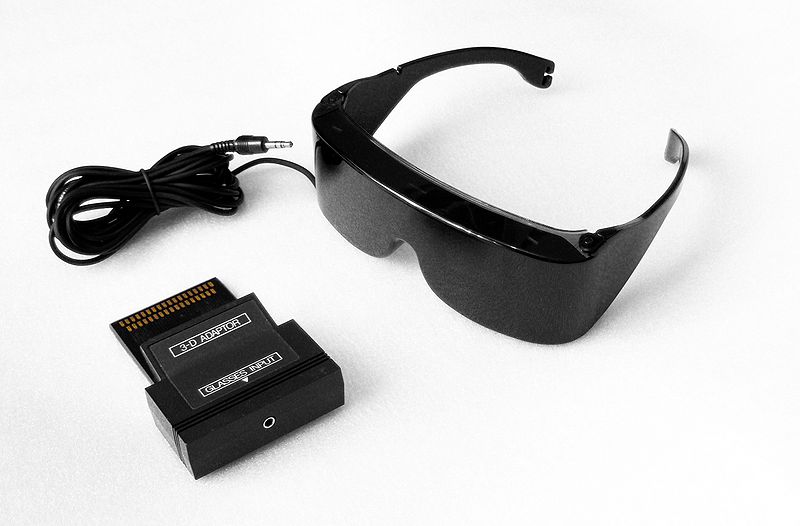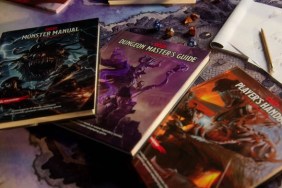While Mark Cerny is best known as being the system architect behind the PlayStation 4, his gaming history is quite storied. From designing Atari’s hit arcade title Marble Madness to working on some of the most iconic platformers of all-time like Sonic the Hedgehog 2, Spyro the Dragon, Crash Bandicoot, and Jak and Daxter: The Precursor Legacy, his impact is hard to ignore. However, not all of his innovative choices have been a hit commercially.
One of Cerny’s most interesting failures come in the form of the Sega Master System 3D glasses. Released in 1987, this peripheral allowed for players to experience a 3D effect while playing specially developed games for the 8-bit system. The glasses themselves used a shutter system to replicate the 3D effect by creating a stereoscopic image, as its left and right lens would rapidly open and close. Unlike a lot of 3D effects at the time, like those seen in the Virtual Boy, this allowed for the games to be seen in a full color palette. However, it also led to a lower frame rate for games, which limited its appeal.
Sega’s main competitor, Nintendo, also released a 3D add-on for the Famicom in 1987, but the company hedged its investment by only releasing it in Japan. This was a smart choice by the Big N as the Famicom 3D system wound up being a complete flop commercially. Sega was much more bullish, as it released its Sega Master System 3D glasses in nearly every major market from Europe to the United States and even in Brazil. This wasn’t a particularly intelligent strategy, as the glasses never impressed players enough for them to buy the accessory in droves.
Sega Master System 3D glasses games

There is always one particular catch-22 when it comes to console add-ons: a sparse game library of compatible titles. It’s pretty much an unavoidable situation as people won’t buy an expensive peripheral if there isn’t a stack of games they want to use it on and it makes little financial sense for a developer to put out a release targeting a nonexistent user base. Despite the risk, publishers need to double down on a new add-on if they hope for it to be successful. That wasn’t the case for the 3D glasses, as only eight games in total were released for the cool device.
Several titles that supported the 3D glasses were ports of hit Sega games that hardcore fans likely already owned. It’s cool to see something like OutRun or Space Harrier in 3D, but it becomes a costly gimmick when you factor in the need to buy both the glasses and a new copy of a nearly-identical game in order to play it.
Other titles offered up a new experience based upon a familiar property. For example, Zaxxon 3D changed the shoot ’em up’s isometric view to one that was behind the player’s ship in order to take advantage of the depth perception that the glasses added. Line of Fire, on the other hand, was a more limited version of the arcade game, as the 8-bit system couldn’t handle the real-time scaling it originally used.
There were only four experiences that were fresh for the Sega Master System 3D glasses. One of the coolest ones was Blade Eagle, another shoot ’em up that used its 3D perspective to offer up a unique gameplay experience. Players could cycle between three separate planes. Unfortunately, it wasn’t released until 1988, so it missed out on impressing players when the peripheral released the year prior.
Missile Defense (which was marketed early on as World War 3-D) took the cost requirement to play up another level by also using the Master System’s Light Phaser. It was a standard light gun game, but had an interesting anti-nuclear war theme to it as players had to shoot the nuclear missiles that countries were trying to annihilate the other with. The action game Maze Hunter 3D and Poseidon Wars 3D, an oceanic shooter that was played from a first-person perspective rounded out the library. The latter was the first game to ever provide a 3D image to the player.
The lasting legacy of the Sega Master System 3D Glasses
https://youtu.be/bDbyZQTWWj4
Since the peripheral wasn’t successful, many of the games that supported the Sega Master System 3D glasses merely became a footnote in gaming; a historical oddity that would be whispered about in the nerdiest of circles, but never widely discussed. However, several of them got to be experienced by a wider audience thanks to the Sega 3D Classics Collection and the ensuing series of 3D remakes of retro titles that the company released for Nintendo 3DS. It made a lot of sense to remake titles like Maze Hunter since they were already designed to be played from a 3D perspective.
The failed system was also one of the forefathers of modern day 3D gaming. Without Sega and Nintendo both investing in the technology in the late ’80s, the future of virtual reality and stereoscopic images could be quite difference today. While there is no doubt that the technology used in both the Nintendo 3DS and modern VR headsets (such as the Oculus Rift or PlayStation VR) are much more impressive, they share a common innovative spirit with its much more limited predecessor that failed to catch on.
It may have been a disappointing result for Sega at the time, but its 3D glasses for the Sega Master System remain a cool piece of gaming history more than 30 years later. Technical limitations that simply couldn’t be avoided and a lackluster library made it a tough peripheral to sell the public on. However, it also inspired tech enthusiasts to continue furthering their work on 3D gaming even if the true fruits of their labor wouldn’t emerge for several decades. It certainly isn’t one of Mark Cerny’s most successful outings, but it’s certainly another important part of his lasting legacy in gaming.












